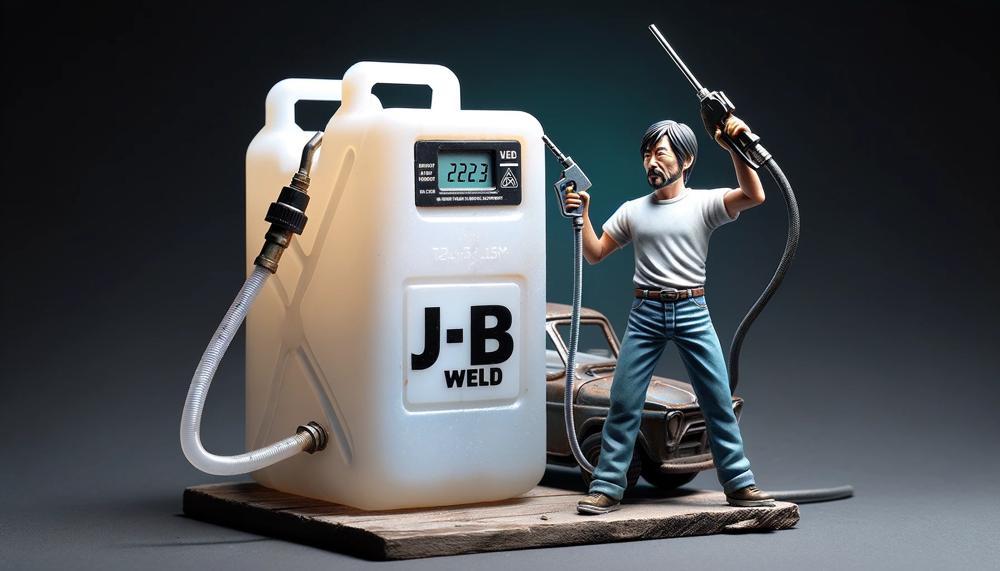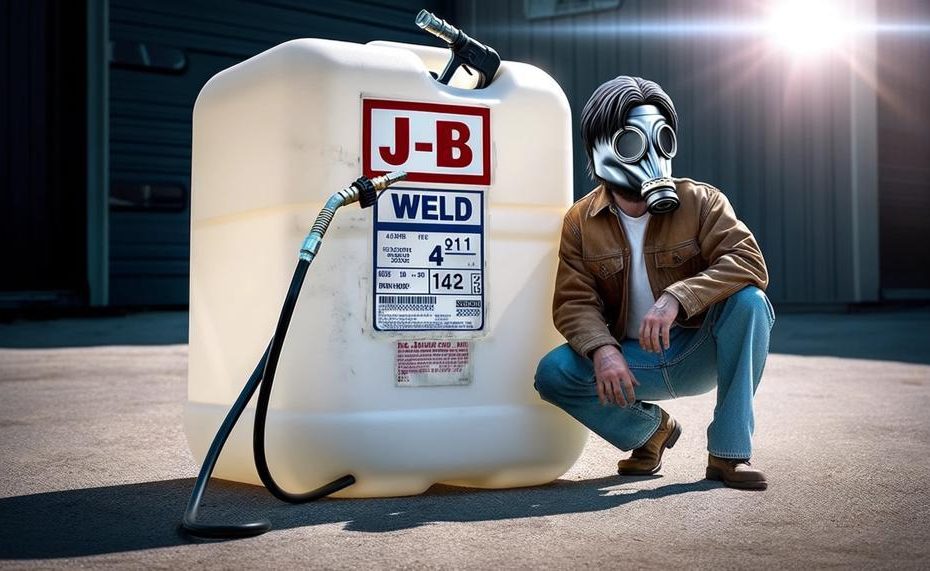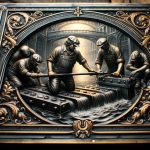In the world of DIY repairs, JB Weld has become synonymous with strong, reliable bonding solutions. But when it comes to fixing plastic gas tanks, can this mighty adhesive live up to its reputation? It’s a question that plagues many a motor enthusiast and backyard mechanic. In this comprehensive exploration, we dive deep into the world of plastic repair, specifically focusing on the effectiveness of JB Weld for sealing and fixing plastic gas tanks. Whether you’re a seasoned pro or a curious novice, this article is packed with insights that will shed light on this sticky situation.
So, will jb weld work on plastic gas tank?
Although it’s not advised for plastic repairs, JB Weld may be used to repair plastic gas tanks. Plastic repairs cannot be completed using JB Weld’s TankWeld Kit; it is designed for use on metal and gasoline storage containers only. On the other hand, others claim that JB Weld adheres nicely to plastic and performs well on petrol tanks.
Two-part epoxy JB Weld PlasticWeld is capable of bonding to many plastic surfaces, such as vinyl, ABS, PVC, fiberglass, glass, and composites. To stop it from drying out and leaking, it comes in a syringe with a resealable cap.
According to one reviewer, JB Weld held for around three months when they initially used it, but when they redone it, it has lasted for more than a year. According to a different reviewer, JB Weld is resistant to chemicals, ethanol, and petrol.
So, let’s get started.
Contents
What is JB Weld?
JB Weld is a renowned two-part epoxy adhesive, celebrated for its formidable bonding strength and versatility across a multitude of industries like automotive, construction, and household repairs. Launched into the market in 1969 by the innovative duo, Sam and Mary Bonham, it has since cemented its reputation as a go-to solution for a wide array of repair tasks, owing to its user-friendly application and robustness.
Distinguishing itself markedly from conventional welding techniques that rely on high temperatures to meld metals, JB Weld excels in creating a potent chemical bond between surfaces without the need for heat. This magic happens when its two distinct components – a resin and a hardener – are mixed in precise equal measure. The ensuing chemical reaction catalyses the epoxy to solidify, thereby forming an unyielding bond.
What sets JB Weld apart from traditional welding are its remarkable attributes:
- Versatility in Material Compatibility: Unlike standard welding, which is typically restricted to metals, JB Weld’s prowess extends to bonding a diverse array of materials, including but not limited to metal, wood, and plastic. This attribute renders it an indispensable ally in repairs demanding the fusion of disparate materials.
- Ease of Application: Forgoing the necessity for specialized tools or professional welding skills, JB Weld offers a straightforward application process accessible to even those with no prior welding experience. This democratizes repairs, empowering DIY aficionados and novices alike.
- Non-heat Producing Bonding Process: Traditional welding methods generate considerable heat, which can compromise or deform sensitive materials like plastic. JB Weld operates sans heat, showcasing its superiority in mending delicate materials without risk of heat damage – think plastic gas tanks on vehicles.
| Feature | JB Weld | Traditional Welding |
| Material Compatibility | Metals, wood, plastic, and more | Limited, primarily metals |
| Application Ease | DIY-friendly, no special tools needed | Requires specialized equipment and skills |
| Heat Generation | None | High |
Does JB Weld Work on Plastic Gas Tanks?
JB Weld might work on plastic gas tanks, but its effectiveness hinges on several key factors.
Suitability for Plastic Types
| Type of Plastic | Compatibility with JB Weld |
| Polyethylene/Polypropylene | Often Incompatible |
| ABS, PVC, Others | Potentially Compatible |
Factors Influencing JB Weld’s Efficacy
- Type of Plastic: Some plastics, like polyethylene, often found in gas tanks, resist adhesives including JB Weld.
- Damage Extent: JB Weld is more suited for minor cracks and leaks.
- Preparation: Proper cleaning and sanding the area enhance adhesion.
- Pressure and Heat: Under high pressure or heat, JB Weld may fail over time.
- Safety: Gas tanks involve flammable contents; safety is paramount.
- Alternatives: Plastic welding or specialized kits might offer better solutions.
Types of Plastics Used in Gas Tanks
In the world of gas tanks, the selection of material is no small affair. It’s about finding the right balance between durability, cost, and resistance to the elements. Let’s dive straight into the heart of the matter.

The stars of the show in gas tank construction are undoubtedly high-density polyethylene (HDPE), polypropylene (PP), and nylon. Each of these materials brings its unique strengths to the table, but how they interact with JB Weld—a go-to adhesive for repairs—adds another layer to the story.
| Plastic Type | Key Strengths | Compatibility with JB Weld |
| HDPE | Exceptional strength-to-weight ratio, corrosion resistance, and can tackle temperatures up to 194°F | Tricky customer for adhesives due to low surface energy, making JB Weld a less-than-ideal choice for bonding |
| PP | Lightweight yet robust, with a high melting point reaching 320°F | Better chances with JB Weld, but don’t skimp on the prep work—sanding or priming is a must |
| Nylon | Top-notch tensile strength and can handle heat up to 221°F | Fairly friendly towards JB Weld, though success heavily depends on surface treatment |
Diving deeper, it’s clear that HDPE’s resistance to bonding is a bit of a stumbling block. It’s the equivalent of trying to make water mix with oil without an emulsifier. PP and nylon, while more receptive, still demand that extra bit of elbow grease in terms of surface preparation to ensure that the bond with JB Weld is not just a fleeting affair.
Advantages and Disadvantages of Using JB Weld on Plastic Gas Tanks
| Advantages | Disadvantages |
| Strong Bond JB Weld can create a bond nearly as mighty as steel when applied correctly, making it ideal for mending cracks or holes in plastic gas tanks. This robust bond withstands gasoline and chemicals, ensuring durability under typical conditions. |
Long-term Durability Concerns Despite its initial strength, the bond may degrade over time due to constant exposure to vibration and movement, potentially leading to failure and necessitating further repairs. |
| Easy to Use Its two-part formula, requiring mixing before application, allows for a straightforward application process. This user-friendly aspect makes it a go-to solution for quick and effective repairs without needing welding equipment or expertise. |
Limited Flexibility Once cured, JB Weld offers limited flexibility, which might not withstand the plastic gas tank’s expansion and contraction due to temperature and pressure changes, possibly leading to cracks or leaks in the repair. |
| Compatibility Issues JB Weld may not adhere well to all types of plastics, such as polyethylene. This incompatibility can lead to ineffective repairs or even further damage to the tank, highlighting the need for careful material assessment before application. |
Tips for Repairing a Plastic Gas Tank with JB Weld
Repairing a plastic gas tank with JB Weld can be a savvy fix if you play your cards right. Here’s how you do it, step by step, making sure it sticks and you stay safe.
| Tip #1: Identify Your Plastic | Before you dive in, figure out what your gas tank is made of. ABS plastic or nylon? Good to go. HDPE or PP? JB Weld won’t hold. Knowing your material is half the battle won. |
| Tip #2: Surface Prep is Key | Get that surface squeaky clean. Dirt or grease will mess with your fix. A swipe of acetone or alcohol should do the trick, making sure the JB Weld has a solid foundation to cling to. |
| Tip #3: Mix Master | JB Weld’s two parts – resin and hardener – need to be mixed just right. Equal parts, stirred not shaken, for a solid two minutes should get you a blend that’s ready to rock. |
| Tip #4: Patience Pays | Once applied, don’t rush it. Give it a full 24-hour stint to cure completely. Cooler temps might need more time, so check the recommendations and don’t jump the gun. |
| Tip #5: Safety First | Gloves on, glasses on, and make sure you’re not huffing the fumes. Work somewhere with a bit of a breeze or at least decent ventilation to keep those nasty vapours at bay. |
Alternatives to JB Weld for Repairing a Plastic Gas Tank
When patching up a plastic gas tank without resorting to JB Weld, you’ve got a smattering of choices that might just do the trick.
Each method comes with its perks, depending on the size of the breach and your comfort with a bit of DIY.
| Method | What’s it about? | When to use it |
| Plastic Welding | Uses a specialised kit to melt and meld the plastic, sealing cracks or holes. | Best for minor damages where a seamless bond is desired. Requires a steady hand. |
| Epoxy Putty | A two-part adhesive that cures to a hard, plastic-like state, filling gaps or holes. | Great for larger gaps or holes, but might lack the strength of other methods. |
| Plastic Tank Repair Kit | Comes with patch material and adhesive designed for gas tank repair. | When you’re after a fix tailored for gas tanks, without the guesswork of material compatibility. |
| Heat Sealing | Employing a heat gun or soldering iron to fuse the plastic around the damage. | For minor, superficial cracks. Care needed to avoid further damage. |
| Replacement | Swapping out the damaged tank for a brand-new one. | When repairs just won’t cut it. Ideal for extensive damage or old, weary tanks. |
Picking the right fix isn’t just about what’s broken; it’s about matching the repair to the damage’s extent and ensuring it lasts as long as the tales of its repair.
Whether it’s wielding a plastic welder with the finesse of an artist, mixing epoxy with the precision of a chemist, or applying a patch with the care of a tailor, the key is in choosing the method that best suits the scale and scope of your gas tank’s grievance.
Conclusion
The topic of whether JB Weld can repair plastic gas tanks has been the subject of much investigation in the varied field of do-it-yourself repairs. The answer is nuanced and dependent on a number of important considerations. With its well-known bonding strength and adaptability, JB Weld offers itself as a possible solution for the frequent yet problematic problem of plastic gas tank repairs. Its efficacy is contingent upon the kind of plastic, the degree of damage, and the surface preparation, rather than being a universal guarantee.
The page offers a thorough how-to, covering everything from knowing the chemistry of JB Weld to figuring out what kind of plastic is in your gas tank to applying the adhesive and using tricks to improve bond strength. It’s evident that while JB Weld may seem like a dazzling star when it comes to materials like ABS or PVC, its sword may not stand up as well when it comes to polyethylene or polypropylene tanks, which represent its dragon.
With this information in hand, do-it-yourselfers may make more informed decisions about whether to use JB Weld or look into other repair options. It is a story about pairing the appropriate dragon with the right hero, emphasizing the value of carefully selecting your weapons and being aware of your opponent’s strengths and weaknesses.





